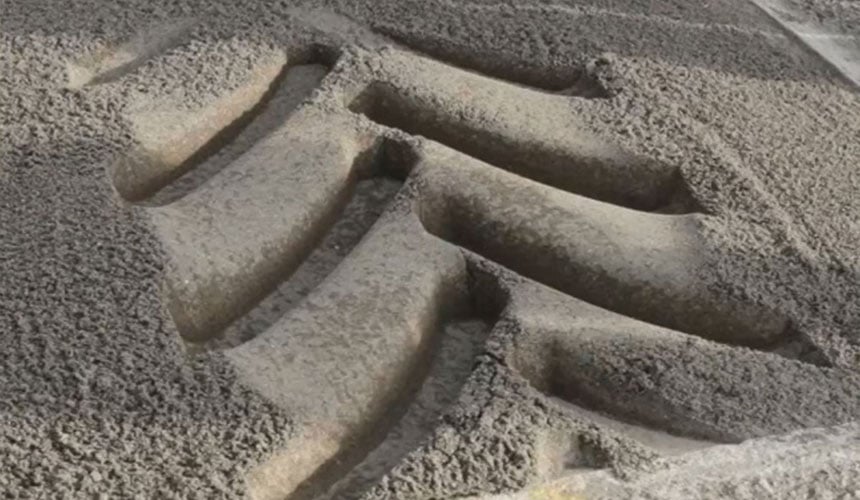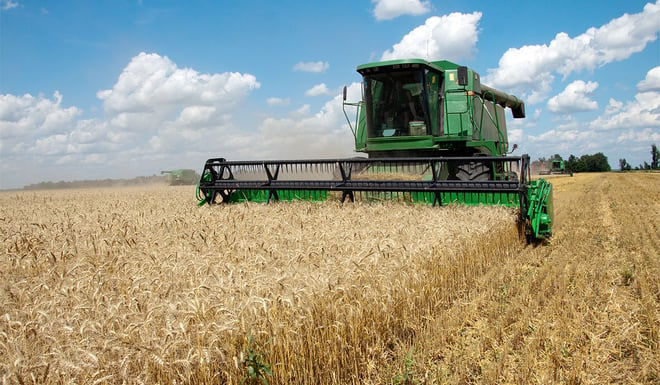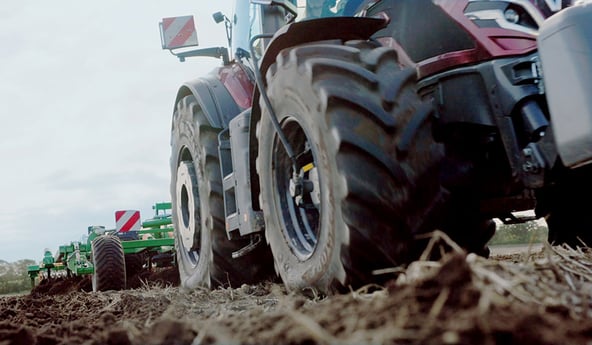You know that the success of your sowing depends largely on soil preparation. It is essential to work the soil correctly for good aeration and to encourage germination.
You can however reduce the preparation work required by anticipating your impact on the soil (compaction) during the harvest thus increasing your productivity.
Spending less time working the soil will save you time and fuel and will reduce the risks of compaction even further as your machines will spend less time on your soil.
Harvesting machines are heavy and crush the soil
Harvesting machines (combine harvesters, silagers…) are generally very big and heavy, with a large impact on your soil structure. As crop yields increase from year to year, hopper capacities are also increasing, resulting in an additional load on the soil. Harvesting machines impact a large surface as you drive across the whole field to harvest the entire crop.
New tyre tehnology helps to reduce the impact of heavy macinery
The tyres that you choose to equip your harvesting machines and all the machinery (tractors and trailers) which will circulate in your fields during the harvest, must be adapted to the job. New technologies such as the IF (Increased Flexion) and VF (Very High Flexion) tyres are now available for harvesting machines. These tyres can carry heavier loads than traditional tyres, with a higher distortion capacity for better distribution of the load on the ground.
What’s more, the pressure must be adjusted depending on the activity and checked regularly during the whole harvesting period, to get the best results from your tyres. Check the tyre footprint which will enable you to monitor the distribution of weight.

Tyre footprint showing a good distribution of the load
A few rules for limiting compaction
1. Check the state of the soil before entering a field
Wet soil is particularly sensitive to compaction. Therefore, if harvesting obligations allow for it (weather, crop development…), wait long enough after rain, in particular after a storm. This will enable you to reduce the risks of soil damage, which can be very important in some regions.
2. Harvest early
If your calendar allows for it, you can also opt for early ripening varieties of the crops that you grow. This will generally help you to harvest in dry conditions, which is preferable for the soil structure.
3. Reduce the load
To reduce compaction, you need to reduce the pressure on the ground, and therefore the load. As a result, avoid driving around your field with overloaded trailers. For harvesting, always finish filling your trailer when it is near the lane bordering the field. Also, empty your machine’s hopper regularly to reduce its impact and protect your soil.
4. Circulate in a reasoned manner
To reduce the impact of machines moving around during harvesting, choose a reasoned circulation system: always travel across the same areas instead of driving randomly to impact a minimum of soil areas. For example, your tractor can follow the tracks left by the sprayer when treating your crops.
More generally, why not investigate controlled traffic farming? This is a new concept which aims to reduce the surface of the field impacted by farming machines during the entire crop cycle, from soil preparation through harvesting.
This system uses RTK guiding tools. It enables you to control the direction of your machines within a few centimetres to produce the same tracks every time. This way, only the specific tracks, determined at the start of the cycle, will be impacted by compaction.
The bridgestone-agriculture.eu blog is written and administered by tractor tyre experts who can provide you with advice to help you achieve optimum productivity (Technical data on agricultural tyres - Agricultural tyre performance - Advice on agricultural tyre pressure - Soil compaction prevention - Sprayer tyre pressure - etc.)
To take it a step further and increase your farm’s profitability, the blog Bridgestone-agriculture.eu has prepared a free, highly detailed ebook which explains the essential role of the agricultural tyre on your productivity.
Most people who read this article have also read some of the following articles:
- 9 major points on soil compaction linked to tractor tyres
- What you need to know about soil compaction caused by your tractor tyres
- How to reduce soil compaction after harvesting?
- What are the consequences of the soil compaction caused by my tractor tyres?
- 3 soil conditions to understand to avoid compaction by your tractor tyres
- What type of farming tyre is best for preventing ruts?
This information is intended only to make you aware of the technical and functional aspects of agricultural tires and their use. It does not allow you to make a judgment or a definitive conclusion on a given problem. Only your agricultural tire expert is able to make a technical assessment and take a final decision, case by case.
Leave a
commentary
Your email address will not be published.
Required fields are indicated with *








